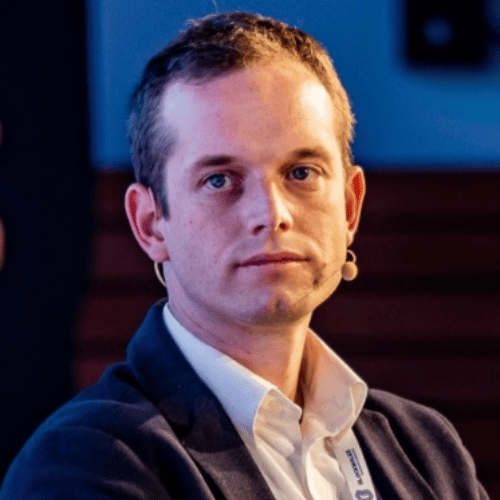Trainings for Qubit Conference®
Slovakia 2024
14. November 2024
RESOLVING INCIDENTS WITH OPEN SOURCE TOOLS
Training description:
Requirements for training participants:
- Knowledge of the Windows operating system
- A computer with at least 16 GB of RAM, 40 GB of free space on the HDD/SSD, and VirtualBox installed (64-bit version)
- If needed, we can provide an image for VMware (in this case, please, contact us a few days before the training starts)
- Allowed access via RDP to the cloud (TCP port 3389 to the external IP)
- Local administrator account (this will help resolving potential issues during the training)
Before the training, participants will receive a link to download the materials.
TRAINERS

Ladislav Baco
Network Infiltration Analyst | ESET | Slovakia

Miroslav Sidor
Security analyst | ESET | Slovakia
CODE STRONG: MENTAL RESILIENCE IN A TIME OF CHAOS
Key Training Points:
- Mental Resilience: Learn the basics of mental resilience and why it is essential for success and mental well-being.
- Stress Neurobiology: Discover practical techniques for managing stress, improving focus, and maintaining productivity under pressure.
- Emotional Agility: Develop the skills to recognize and regulate emotions, create better relationships, and foster a more harmonious work environment.
- Practical Tips and Techniques: Experience exercises and techniques that can be easily incorporated into your daily routine.
- Interactive Sessions: Engage in interactive activities and discussions with fellow IT professionals to share experiences and learn from each other.
This workshop is a valuable opportunity to invest in your mental health, increase your resilience, and ultimately enhance your performance and job satisfaction. Join us to learn, grow, and thrive on your professional journey.
Training description:
In the dynamic field of information technology, professionals face challenges that strongly impact mental health and overall well-being. Peak performance requires a lot of physical and mental energy. Enhancing the ability to focus, manage stress and pressure, make quick and correct decisions, and increase mental resilience is essential in today’s business, work, and life.
This workshop will provide you with answers to the questions of HOW:
- To be prepared for demanding challenges and quickly regain balance after overcoming them?
- To increase the sense of mental control?
- To regulate your emotions so they help you?
- To cultivate the ability to focus and make decisions amidst chaos?
- To grow with every experience?
The workshop will focus on managing the high demands and stressful situations that today’s life imposes on us. It will provide you with the necessary tools and strategies to effectively address these challenges.
Requirements for training participants:
No specific knowledge is required. Participants should be willing to be open and honest, as sharing their questions and experiences can enrich the entire group.
MANAGING CYBER RISKS QUANTITATIVELY
Immediately and practically improve cyber risk management using basic CRQ (cyber risk quantification) methods.
Training description:
Elevate your cyber risk management from dubious to quantifiable! Embark on a journey towards excellent and practical risk-based cybersecurity with our training specifically designed for beginners in Cyber Risk Quantification (CRQ). You have the opportunity to enhance your practical “quant risk” skills under the guidance of an experienced expert, Mgr. Michal Hanus, Ph.D. Join us and turn theoretical knowledge into practical experience, quantify cyber risks, and select appropriate countermeasures efficiently, economically, and strategically. All within the context of current Slovak legislation and regulatory guidelines.
Requirements for training participants:
P1: Reasons for the failure of traditional methods
(“A problem well stated is a problem half solved.” – Charles Kettering)
We will closely examine the essence and objectives of cyber risk management and immediately uncover the pitfalls of popular qualitative risk analysis. We will explore why the traditional cyber risk model, Risk = Threat x Vulnerability x Impact, with its alluring but misleading simplicity of risk matrices, fatally fails and produces outcomes worse than random chance. Find out what quantitative analysis is and isn’t, and how incremental improvements towards quantifying cyber risks (CRQ) can revolutionize risk assessment and comparison, making cyber risk management a valuable asset for the entire company.
P2: Redefinition of the risk model for practical and pragmatic decisions
(“All models are wrong, but some are useful.” – George Box)
Break away from the flawed qualitative mantra and embrace the scientific estimates and calculations that factor in the true influence of threats and vulnerabilities in a robust scenario-specific risk model.
We will move away from the flawed and highly promoted qualitative mantra R=T*V*I in the Slovak legislation and shift towards quantitative estimates and real calculations using scientifically validated methods. We will properly consider the impact of threats and vulnerabilities in a verified risk model based on specific scenarios.
P3: One universal number is not enough: The art of precision and accuracy in risk analysis
(“The flaw of averages.” – Sam Savage)
We will uncover the limitations of discrete quantitative analysis as described and mandated by ISO standards. We will find out why a single number cannot determine your risk management strategy, and finally, we will show why the “quantitative methods” stated in Slovak legislation have nothing to do with CRQ.
P4: From theory to practice with real-life examples
(“In theory, theory and practice are the same. In practice, they are not.” – Benjamin Brewster)
In a real-life case study, we will vividly illustrate the comparable complexity and laborious nature of the quantitative analysis of cyber risks (CRQ) compared to the current SK legislative-preferred and entirely inaccurate methods. You will acquire the selection of experts, their calibration, and the art of using expert estimates to measure inherent risks and assess mitigation effectiveness; subsequently, calculating residual risks will become routine.
P5: Practical Experience with Established Tools in the Field
(“Avoid spreadsheet misery, the price of using cheap spreadsheets is too high.” – Robert Brown Jr.)
During this course, participants will gain introductory practical experience with modern and established tools such as R/RStudio, Lumina Analytica, and MS Excel, and explore their applications in modern cyber risk management.
Requirements for training participants:
• basic knowledge of statistics and probability (basic course)
• ability to practically apply mathematical skills at an intermediate (high school) level
• intermediate proficiency in MS Excel
• knowledge of general principles and common terminology used in the field of cybersecurity
• understanding of principles, concepts, and common elements/components of contemporary corporate ICT environments
• intermediate knowledge of the enterprise risk lifecycle and general principles and common processes for their management within a business
Requirements for training participants:
• End device (notebook, tablet, phone) with WiFi or internet connection
• Web browser (for simple mathematical survey questions, basic expert estimates, mathematical quizzes for entertainment and future profit, to run the web model from AgenaRisk AI)
• PC with MS Office or MS Excel (for initial simple modeling and basic calculations)
• Desktop software Analytica for Windows Free Edition (installable from the AnaSetup.exe package available at https://lumina.com/analytica-downloads/
• Desktop versions of a) the R statistical language and b) the RStudio Desktop development environment for Windows (both installation links and instructions are available at https://posit.co/download/rstudio-desktop/)
Warning:
• MacBook with MacOS, Microsoft 365 for Mac, and RStudio for MacOS can certainly be used, but we cannot provide support for this setup during training
• We only support the current versions of Windows, Office, and RStudio for Windows
OD AUDITU PO INCIDENT RESPONSE PLÁN
Ako efektívne zabezpečiť organizáciu
Počet účastníkov 30
Školitelia:
- Peter Hanzlík | Konzultant v DXC Technology
- Marián Možucha | SAP Solution Architekt v DXC Technology
Kľúčové body školenia:
- Úvod do AI
- Úvod do Generatívnej AI
- Využitie Generatívnej AI v podnikových produktoch a riešeniach
- Praktické ukážky nasadenia Generatívnej AI:
- Bezpečnosť v Generatívnej AI
- Etika v AI
- Regulácie AI
Training description:
Workshop sa zameriava na poskytnutie komplexného pohľadu na oblasť umelej inteligencie (AI), jednej z najvýznamnejších a rýchlo sa rozvíjajúcich technologických oblastí. Naším cieľom je prekonať klamlivé predstavy o AI a poskytnúť jasné a podrobné informácie o jej historickom vývoji, rôznych konceptoch a rôznych oblastiach, v ktorých nájdeme jej aplikácie. Ponúkneme podrobný pohľad na Generatívnu umelú inteligenciu (Generatívna AI) a jej významnú úlohu v dnešnej dobe. Oboznámime sa s hlavnými stavebnými blokmi, ktoré tvoria nový typ AI, a preskúmame, prečo je tento prístup výrazne odlišný od tradičnej GOFAI (Good Old Fashioned AI).
Requirements for training participants:
No specific knowledge is required. Materiály z workshopu (PDF prezentáciu) poskytneme po jeho uskutočnení.














